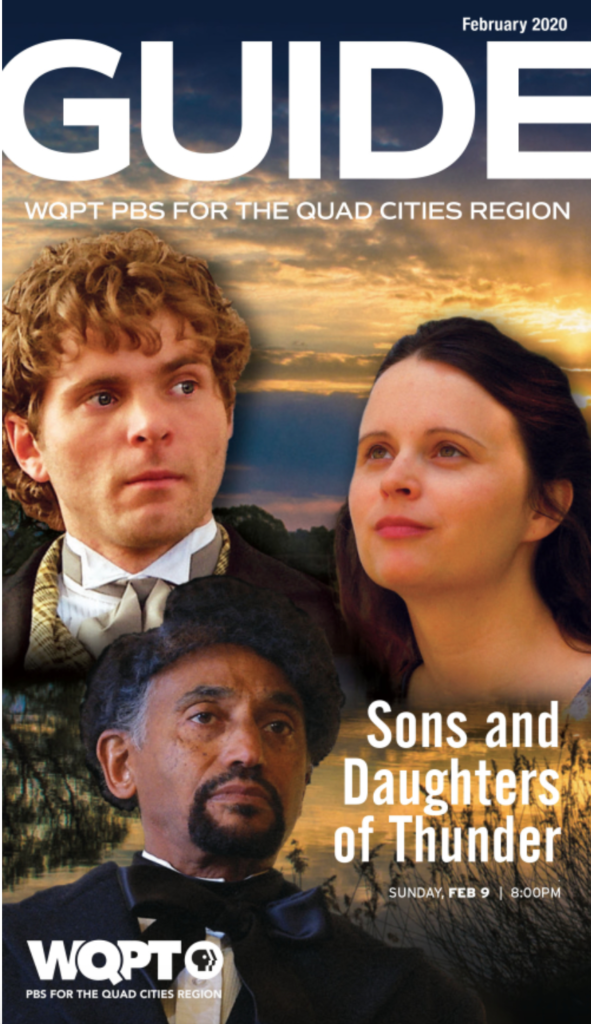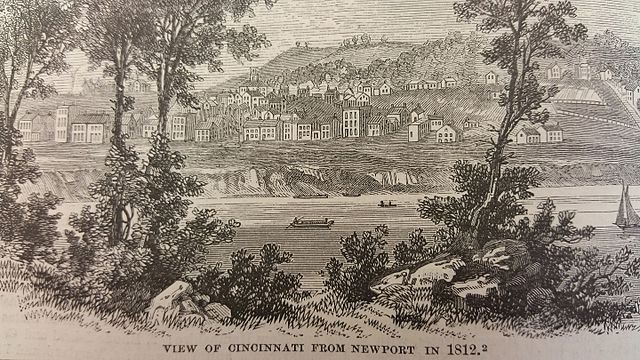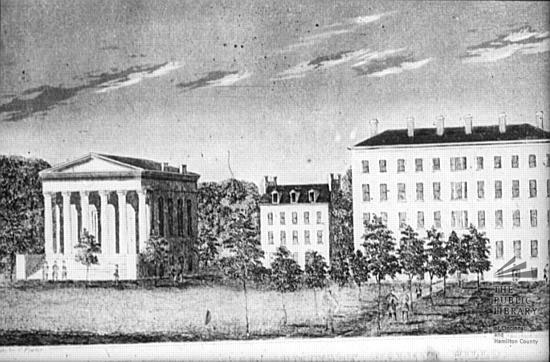“Sons & Daughters of Thunder”- Joseph H. Payne, The Lane Rebels, and Abolition in 1834

McMurray Family, Payne Family (Click for Family Tree)
Am I related to Joseph H. Payne? Yes, if you are a descendant of Dr. Edward A. McMurray, Dr. Herbert C. McMurray, or Maude “Midge” (McMurray) Cook. They are the great-grandchildren of Joseph H. Payne. You would also be related if you are a descendant of Cornelia Mary (Payne) Hinckley and her husband, Horace A. Hinckley of Lake County, Illinois.
Click here to open “Sons & Daughters of Thunder” trailer: https://vimeo.com/380634117
As a part of Black History Month, WPQT, a PBS station in the Quad Cities* will air the program, “Sons & Daughters of Thunder- The Beginning of the End of Slavery in America.” This film is about an event that has been forgotten now but in 1834, it was highly divisive, front page news, incited violence, and a part of the rocky path that led to the Civil War decades later.
Our ancestor, Joseph Hitchcock “J.H.” Payne, was right there in the middle of it all.
The film will be aired tomorrow, Sunday, February 9th, 2020, at 8pm. It is a docudrama, so those with docuphobia can rest at ease, and hopefully enjoy it if they are in the Quad Cities area. The program will be followed by a documentary on Harriet Beecher Stowe from the same producers. Harriet was also there for these events, and was influenced enough by them, along with her travels, to write the novel, “Uncle Tom’s Cabin.” This book was a bestseller in its time, and changed the course of our country and our people. Hopefully PBS will pick up these films to air throughout the country, but right now, you can purchase “Sons & Daughters of Thunder” through Amazon or directly from the Fourth Wall Films website. (And let PBS know that you want to see both!) I have not seen these films yet so cannot really say how in depth they go, etc., but the subject matter is so important.
The film profiles the people involved in the Lane Debates that occurred over 18 days in February, 1834. Lane Theological Seminary was a Protestant school in Cincinnati, Ohio, a boom town of about 25,000 people. Although the area was still somewhat a frontier, because Cincinnati was located on the Ohio River, which led to the Mississippi River and down to the Gulf of Mexico, commerce and services for those traveling the river made it one of the largest cities in America at the time. Across the river was Kentucky, a slave state, and many Kentuckians crossed the river to do business in Cincinnati.

Joseph H. Payne, very religiously devout, was a 24 year old student, working toward his Divinity degree at Lane. He had previously attended the Oneida Institute in Whitesboro, New York, and would have met Theodore D. Weld there. Weld was about seven years older than J.H., but the two had many similar ideas. Many Oneida students followed Weld to Lane Theological, as did J.H. Payne. Lyman Beecher, a minister, became the President of Lane, and his daughter , Harriet Beecher (who later married Calvin Stowe), joined him in Cincinnati.

Angelina Grimke, daughter of a Southern slave owner, had left her home in Charleston, South Carolina once old enough to act on her feelings about the immorality of slavery. She married Theodore Weld, so J.H. probably knew her as well. Angelina and her sister Sarah Moore Grimke had become abolitionists, Quakers, and suffragists; they were prohibited from ever returning to the South due to their stance on slavery. Frederick Douglas, the well-known former slave who became a powerful orator against slavery, was another of the cast of abolitionists you will see in this film.
While rhetoric and debate were always important in American higher education, the Lane Debates went too far for the acceptable topics of public debate- the subject was just to controversial. Violence and the loss of business from pro-slavery residents of Kentucky and those traveling the river could be consequences of the persuasive student debates, and the Seminary wanted to avoid being seen as a part of that political point of view. So the administrators of Lane prohibited the students from holding public debates on slavery. The students would not back down, despite the threat of being dismissed from the Seminary. The charismatic Theodore Weld brokered a deal with the financially ailing Oberlin Collegiate Institute (later Oberlin), and on 15 Dec 1834, 51 men signed a thoughtful, respectful statement detailing what had happened and why they were leaving the Seminary and going to study at Oberlin. It was published in William Lloyd Garrison’s abolitionist newspaper “The Liberator,” and read throughout the country. (Well, it probably was used in the fireplace more in the South than read.)
The risks the Lane Rebels took in standing up for their beliefs makes them all American heroes, and founders of a movement that led to abolition, women’s rights, and freedom of speech for college students. We will explore these topics in upcoming posts, and are so pleased that this period of history is being presented to new generations of the American public. Watch the film wherever you can, buy the DVD, read upcoming posts, and ask yourself: “Would I have done the same as my ancestor, Joseph H. Payne, and the other ‘Lane Rebels’ and abolitionists?”
Notes, Sources, and References:
- Before anything else, a huge thank you to the producers, Kelly & Tammy Rundle and Kent Hawley; Earlene Hawley and Curtis Heeter who wrote the original play; and all the other folks who worked to made this production happen. This is such an important story to share!
- Unfortunately we have not been able to communicate with descendants of Cornelia Mary (Payne) Hinckley and her husband, Horace A. Hinckley. Mary, as she was known, was one of three children of Joseph H. Payne. Her sister, Ruby D. Payne, died at age 11 in 1850. Her brother, Edward B. Payne, survived childhood and had one daughter, Lynette “Amino” (Payne) McMurray, who was the mother of the two doctors and daughter “Midge” listed above.
- *Moline, East Moline, Rock Island in Illinois, and Bettendorf and Davenport, Iowa are considered the “Quad Cities” even though technically that is 5, not 4, cities.
- IMDb is a movie database that is now owned by Amazon. The link for this movie is https://www.imdb.com/title/tt3835150/?ref_=ttpl_pl_tt
You can also click for ‘full cast’ but Joseph H. Payne is not listed as a character. This may be because there is very little found of his specific role in the debates, etc. He definitely was, however, one of the “Lane Rebels” as they were called, and upcoming posts with tell more about Joseph. - “Cincinnati”- https://en.wikipedia.org/wiki/Cincinnati
- “Backstory- In The Beginning There Was a Play… And It Was Good!” Details on the playwright and film adaptation of Sons & Daughters of Thunder. https://docublogger.typepad.com/thunder/backstory/
- You can order the film from the producers/Fourth Wall Films at https://www.fourthwallfilms.com/dvds.htm. Although the website states “Not secure” due to new Google requirements, the purchase section of the website opens up a secure window through PayPal. Amazon also offers the film: https://www.amazon.com/gp/product/B082Z9L8D6?pf_rd_p=ab873d20-a0ca-439b-ac45-cd78f07a84d8&pf_rd_r=A9FVVWY3QW9G3ZCD2JVG
- Lane Seminary- “Defence of the Students”: https://www2.oberlin.edu/external/EOG/LaneDebates/RebelsDefence.htm
Click to enlarge any image. Please contact us if you would like an image in higher resolution.
We would love to read your thoughts and comments about this post (see form below), and thank you for your time! All comments are moderated, however, due to the high intelligence and persistence of spammers/hackers who really should be putting their smarts to use for the public good instead of spamming our little blog.














